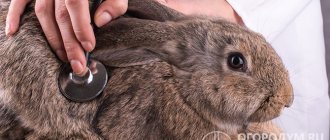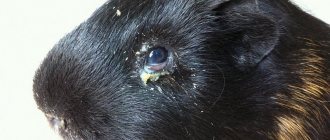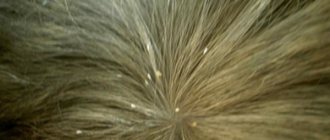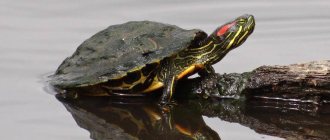Causes and signs of diseases of red-eared turtles
Why do diseases occur in red-eared turtles? The reasons are due to the following factors:
- contacts with sick animals;
- varying in severity and nature of injury;
- stress after moving or as a result of changing climatic conditions;
- poor nutrition and lack of vitamins;
- violation of the temperature regime in the aquarium.
Since most of the time these animals behave calmly and move little, it is not always possible to recognize diseases of red-eared turtles at first glance. How can you tell if your pet is unhealthy? You should be wary if the following symptoms are found:
- The animal stays on the water surface for a long time.
- The turtle is lethargic and shows no interest in food.
- Bloody impurities appeared in the stool.
- A white coating is visible on the animal's skin.
- It is noticeable that the shell of the red-eared turtle is peeling off or the bones have softened.
- The animal has swollen eyes, from which green pus is released.
- The pet lies at the bottom for a long time, showing no interest in the world around it.
If you detect one or more of the listed signs, you should not postpone a visit to the veterinarian and try to treat the animal at home. If a turtle gets sick, it needs urgent specialist help and adequate treatment, otherwise some dangerous syndrome or intestinal disease will lead to the death of the individual.
And if not molting, then what?
However, the symptom of turtle shell peeling may indicate other, more serious reasons not related to molting:
- vitamin A imbalance,
- fungal diseases,
- rickets.
The first ailment is characterized by the formation of ulcers, very severe peeling or flaking of the skin. The scutes peel off from the shell (this does not apply to decorated turtles), and even quite large pieces come off.
An indicator of a fungal disease or dermatitis can be prolonged molting. In an amphibian, the scutes are not completely removed, but under them or on the skin of the animal, areas and sores with a pinkish tint form. White spots appear on the shell of a sick animal. The skin in the folds exfoliates and flakes, causing swelling and pimples. The turtle is suffering from severe itching.
Keep the aquarium clean. The main reason for this misfortune is the violation of the conditions of maintenance, the quality of the water: perhaps its temperature and quality of cleaning are too low. Therefore, first you need to thoroughly clean the aquarium and change the water.
If you notice white spots on a turtle shell, accompanied by peeling, you should show it to a specialist who will recommend effective medications.
Rickets in turtles can cause not only the detachment of shell particles, but also its curvature. This is evidence of a lack of vitamin D3 and calcium in the body, which is fraught with other serious symptoms:
- not only the “body armor” is deformed, but also the paws;
- bones are characterized by increased fragility;
- the cloaca falls out;
- the turtle loses the ability to rise on its legs;
- the mucous membrane of the eyes turns red;
- digestive functions are disrupted;
- the bite changes.
If you are concerned about prolonged molting, consult a doctor. These are life-threatening signs for your turtle. In order not to lead to a sad outcome, it is necessary to start treatment in a timely manner.
If you find a soft shell on a turtle - a sign of rickets, be sure to reconsider its diet. It is necessary to introduce into the diet mixtures containing more calcium and vitamins.
What do red-eared turtles suffer from?
There are a variety of diseases that affect red-eared turtles. Ailments are divided into main groups:
- Diseases of the bones and shell caused by a lack of vitamins in the animal’s body, especially calcium.
- Respiratory diseases. The most dangerous ailment is pneumonia in red-eared turtles.
- Intestinal diseases caused by pathogenic bacteria or occurring when helminths parasitize the body.
- Diseases of the hearing organs, in particular, otitis media in the red-eared turtle.
- Skin diseases of fungal and bacterial nature.
The listed ailments can lead to serious disorders in the turtle’s body if timely treatment is not carried out. In order not to start the disease, it is important to provide timely help to the animal, and for this you need to know the main symptoms and signs of each disease.
How to care for a turtle during this period
As soon as the molting process has been detected, the turtle should immediately be provided with the necessary conditions. During this period, you cannot change your diet. The beginning of the process indicates normal growth and the diet should include foods that affect active growth. These are products that contain calcium and other important vitamins. To ensure that the turtle's body is replenished with calcium, small crustaceans and fish fry can be included in its diet. Various vitamin complexes intended for young individuals may not be superfluous.
During the molting process, active pollution of the water occurs with particles of dead skin and shell. Therefore, during this period, you should change the water more often so as not to start the rotting process. This is also necessary to ensure that the turtle does not pick up any infection, since young skin is not so resistant to the penetration of viruses.
Sometimes a turtle needs help. If it is noticed that the dead skin does not fall off for a long time and brings certain inconvenience to the turtle, then you can help remove this dead skin with some effort. If we assume that some areas of dead skin remain on the turtle, then the turtle itself will try to do this, after which wounds may appear on the surface of the skin, and this is extremely dangerous for its health.
Detachment of horny plates
This trouble is not a disease, but rather a consequence of various reasons. Some doctors consider this phenomenon as a symptom.
In normal condition, turtles' shells do not peel off and molting does not occur. But during the period of growth of the horny plates, this phenomenon occurs quite often. In adulthood, this can occur due to a lack of vitamins A and B2, improper content, the appearance of fungus or the influence of harmful algae.
If the shield comes off smoothly, then there is no need to worry.
In other situations, you should act accordingly:
- The shield is increased in size and extends only from the middle. This problem can be solved with increased feeding and vitamin replenishment. There is no harm in adding methylene blue to the water.
- The shield is divided into layers, inside it there are entire cavities. In the place where the shield was, a gray coating or brown crust remains. This is a consequence of the activity of the fungus. To get rid of it, you need to completely clean the aquarium, place the turtle separately and soak it in oak bark tincture. In addition to this, you need to add methylene blue to the main water. In any situation, treatment should last 2 weeks.
- The scutes come off only in a specific place, a softening of the healthy scutes is felt around, and an ulcer or blood remains at the place where they are located. This is a bacterial disease. In this situation, bluing will again come to the rescue, as well as clotrimazole ointment, and a complex of antifungal drugs. The turtle should be left in a dry place at night. It's better to consult a veterinarian.
Pneumonia
As it turns out, pneumonia can develop not only in humans, but also in turtles. This happens when the reptile’s body becomes hypothermic. The disease is considered serious, and if the pet does not receive timely treatment, there is a risk of death.
Signs of the disease can be noticed within 24 hours after the onset of the inflammatory process. The reptile will be on land or swimming on the surface more often, as it will lose the ability to dive. Pneumonia is treated with medication or using traditional recipes. It is possible to achieve the greatest efficiency only with an integrated approach:
- Intramuscular injections (drugs "Baytril", "Amikacin") are required - consultation with a veterinarian is required, as it is important to determine the exact dosage. If the dose is determined incorrectly, the medicine will not only not help, but can also lead to the death of the turtle.
- Methods of traditional medicine - steam inhalations and warm baths with a decoction of chamomile flowers have a high effect. The reptile is first held over steam and then immersed in liquid for 25-30 minutes. The optimal temperature of the solution for the treatment of pneumonia should not be higher than 30°C.
Do you need help?
Uneven molting causes discomfort to the animal and can injure it. Some owners themselves try to remove the top layer of the shell, wanting to help the pet. Such assistance is not recommended, since there is a high risk of harming the reptile.
A safer way is to remove the turtle from the aquarium to dry completely. Peeling off of dry scales will be easier, most of them will fall off without outside help. To speed up molting, the shell is also wiped with a decoction of chamomile flowers.
Experts recommend sometimes giving soda baths to molting reptiles. They help remove dirt from under the scales and prevent rotting. For bathing, use a container with low sides. Pour warm water into it with the addition of baking soda in a ratio of 1 teaspoon per liter of water. The optimal duration of the procedure is no more than 20 minutes. After bathing, pat the turtle dry with a towel and brush the shell with olive oil.
Hearing diseases
A common disease that affects the auditory organs of turtles is otitis media. Its main danger is that the disease can be asymptomatic for a long time, and as a result lead to serious health problems or death of the animal. You can suspect the presence of otitis media by the following signs:
- the animal has a swollen cheek and asymmetry of the head is observed;
- the turtle does not show interest in food and the surrounding reality;
- the coordination of the individual’s movements is impaired.
Otitis in turtles can be unilateral or bilateral, when the swelling is visible only on one side of the head or both cheeks have increased in size. With such a disease, three scenarios are possible:
- breakthrough of pus through the skin;
- exit of masses through the oral cavity;
- the need for surgical intervention.
In the first case, you will need to treat the wound formed after the breakthrough of pus with antimicrobial agents and healing ointments.
In the second case, when the pus does not break out on its own, you need to massage the problem area, lightly pressing on the swelling. After the purulent discharge begins to come out, it will be necessary to remove these masses from the animal’s mouth. When massages do not bring the expected result, surgery is performed, the purulent focus is opened, and the canals are washed. During the rehabilitation process after otitis, the animal will need vitamins and injections of calcium gluconate.
Bone (shell) diseases
The main symptoms in this case are softening or peeling of the shell. This can occur both due to a lack of ultraviolet radiation (artificial or natural), and due to a lack of calcium in the body. In baby turtles, shell abnormalities indicate the presence of rickets. Detachment of the scutes is also possible when infected with a fungal infection.
In order to prevent softening of the shell, it is necessary to irradiate the terrarium with a special ultraviolet lamp at strict intervals. By the way, similar devices for terrariums from the German company Hagen have proven themselves to be quite good. It is also necessary to eat chopped fish with bones (it is advisable to grind the bones) to supply the body with calcium.
Fungal disease of areas of the shell is easy to identify. Under the peeling shield, brown crusts and a gray coating are visible.
This case is treated by daily washing the affected area with a solution of methylene blue for 30 days.
In more complex cases (ulcers and even blood stains are visible under the shield), it is recommended to use clotrimazole medicinal ointment. The ointment is applied to the affected area in the evening, and the patient is left on dry land overnight. During the day, you need to carry out the washing procedure in a blue solution.
Feeding
The issue of preparing your pet’s diet must be approached very responsibly. Very often, incorrectly selected food provokes red-eared turtle disease.
In an aquaterrarium, the diet of red-eared turtles should include small crustaceans (gammarus or shrimp). Your pet will not refuse small aquarium or river snails. You can finely chop ocean fish, meat, and liver.
Owners are often interested in the question of what diseases red-eared turtles carry. It should be noted that most pathologies are associated with the condition of the shell - softening, delamination, etc. This is often observed with a lack of calcium. To avoid such problems, it is necessary to include in the animal’s diet foods rich in this element - fish heads, bone meal, eggshells, chalk.
We must not forget about useful supplements in the form of plant foods. Turtles enjoy eating leaves of cabbage, dandelion, spinach, plantain, and lettuce. Among the algae, they will like elodea, duckweed, seaweed, edogonium, anacharis, and water beetle. Young turtles should be fed twice a day. Then they are transferred to a single meal. Reptiles over two years of age are fed no more than three times a week.
Skin diseases of the red-eared turtle
Despite the fact that skin diseases are not among the most common in the red-eared turtle, they are among the most dangerous for it. The reason for this is the alien natural environment. The slightest, even the most insignificant injury can cause a skin infection, which will immediately manifest itself in the form of ulcers, abscesses and deformed areas of the skin. In addition, skin lesions often go hand in hand with other, no less serious diseases and are only auxiliary or signs indicating the presence of something more serious. The most common skin diseases include the following:
- peeling of the skin.
- abscess.
- dermatomycosis.
Peeling of the skin is just one of the cases mentioned above, when the problem can be independent or a signal of something more serious. It is the formation of peeling scales on the body of a turtle and occurs when:
- mechanical injuries and damage.
- contracting an infection.
- hypervitaminosis (excess of various vitamins).
- lack of vitamin A and group B in the turtle body.
Only a specialist can name the exact reason after a thorough (and possibly comprehensive) examination. And only after diagnosis can a course of treatment be prescribed.
An abscess (purulent inflammation of tissue in a localized area) is a consequence of skin damage due to injury or the activity of parasites (for example, ticks). It “gives out” itself by forming a swelling at the site of injury (usually subcutaneously) and squeezing the tissues above it, which causes unpleasant and painful sensations to the turtle. It is dangerous because in the absence of treatment, tissue necrosis and death begins. Most often, abscesses are recorded in land turtles, but they are also found in red-eared turtles.
Abscesses are treated exclusively by surgical intervention:
- under anesthesia (0.5% novocaine), the swelling is opened and wait until all the pus comes out.
- the wound is washed with hydrogen peroxide, narrow gauze strips soaked in it are inserted into it and sprinkled with trypsin or chymopsin. Strips should be changed every day.
- in parallel, a course of antibiotic treatment is carried out as prescribed by the doctor.
Treatment is carried out until the abscess disappears.
Of the diseases mentioned, dermatomycosis is perhaps the most common, since its causative agent can rightfully be called a permanent resident of the aquarium. We are talking about a fungus of the genus Saprolegnia parasitica, which can cause such a dangerous and contagious disease as saprolegniosis in fish, and the already mentioned dermatomycosis in red-eared turtles. The source of the appearance of fungus in an aquarium is a high content of organic matter in the form of remains of uneaten food, and in natural conditions - dead shellfish, fish and other inhabitants of the reservoir. It consists of white thin branched threads-hyphae, with the help of which it penetrates into the tissues of the skin and begins its activity, the result of which, as in the case of an abscess, can be tissue necrosis and the possibility of damage to internal organs and muscles, ending in death. However, despite such a dangerous neighborhood, a turtle (like a fish) can become infected with this fungus only under certain conditions: cramped conditions (if it shares its home with someone else), polluted water with a temperature below +20, or an inappropriate level of acidity.
Externally, dermatomycosis manifests itself as:
- a grayish-white coating on the skin and shell of a turtle.
- deformation of the shell and detachment of the cornea plates.
- formation of granulomas.
- osteolysis (washing out of the mineral part) located under the horny plates of bones.
Like other skin diseases, it can often act as a concomitant illness and, further weakening the body, accelerate the death of your pet. Fortunately, this disease can be cured even at home. The only condition is your timely reaction to a suspicious raid, which tends to spread quickly.
In the early stages, dermatomycosis is treated by bathing the sick turtle for fifteen minutes in a solution of malachite green at a rate of 0.15 mg. per 1 liter of water or in a solution of potassium permanganate (potassium permanganate), prepared as follows: 1 gr. drug per 100 ml. water, then 1 ml. add the solution to 1 liter of water. After bathing, you need to lubricate the affected areas with Canesten cream containing clotrimazole, or Parkesterone or Panolog ointment. These procedures are carried out over 2-3 days with constant monitoring of the dynamics of the disease. With proper treatment, the fungus will disappear after the specified time. If dermatomycosis is in an advanced stage (that is, there are deeply affected areas), experts advise removing them and treating the resulting wounds with BetaisodonaR ointment, which contains povidone iodide. Some sources also recommend periodically treating the turtle with ultraviolet light, but you should consult a herpetologist about the advisability of this method and the dosage of radiation. But if dermatomycosis has reached the stage of bone destruction, treatment may take a long time, and it is not a fact that it will be successful.
Along with the main treatment, measures should be taken to improve the living conditions of the red ear - for example, finally changing the water in the aquarium or reviewing the diet.
In some cases, when diagnosing the activity of other bacteria or yeast, experts recommend treating ulcers with solutions of levovinisole, sea buckthorn oil, vinylin or concentrated vitamin A, as well as intramuscular injections of chloramphenicol (75 mg per 1 kg of weight). An indispensable condition for successful treatment is isolation of the reptile for approximately two weeks.
Diseases caused by pathogenic fungi
Often, owners of red-eared and other aquatic turtles are faced with the fact that their pets are covered with spots and a coating that looks like a layer of cotton wool. A similar disease can be found not only in turtles, but also in other aquarium reptiles. Most often, the cause of this symptom is fungi, and to combat them the following actions must be taken:
- treatment of damaged areas with a 1% solution of potassium permanganate, a similar procedure is carried out within 3-5 days;
- additionally, antifungal ointment is applied to the tissue - “Exifin”, “Atifin” and other analogues;
- All items in the aquarium must be disinfected - they will have to be boiled.
Treatment of fungus in a turtle at home
Treatment of fungus in a red-eared slider takes about a month. An integrated approach using various drugs is used for treatment. In addition, it is necessary to keep an ultraviolet lamp on around the clock, the rays of which have a detrimental effect on pathogenic microorganisms, including yeast fungi.
Aquarium water
When treating a fungal infection, the aquarium water should be heated to a temperature of 22 to 26 degrees, due to the fact that warmer water promotes accelerated growth of the fungus. It is necessary to add methylene blue crystals to the water for a month for disinfection. Change the water in the aquarium weekly, followed by disinfection of the aquarium itself.
Pharmacy drugs
| Type of drug | Name | Application |
| Injections | Baytril, Marfloxin | course of injections daily for 10 days |
| Ointments | Triderm, Terbinofin, Akriderm, Nizoral | course of treatment is 14 days with use at night. The animal must be in a dry place |
| Baths | Betadine | daily 30 minute baths for 14 days |
Traditional methods of treatment
In addition to the main set of treatment procedures, you can use traditional medicine methods when treating fungus in turtles to speed up the healing process.
For treatment, an infusion of oak bark similar in color to brewed tea can be used. Daily baths lasting about an hour are taken with this infusion. Such baths have an antiseptic and healing effect.
A whitish coating on the shell in the initial stage of the disease can be eliminated by bathing the turtle for 30 minutes in a solution of 2 teaspoons of salt in a liter of warm water for 15 days. During the procedure, you need to monitor the pet's behavior.
Treat fungal-affected areas with a 1% solution of potassium permanganate for 3 days.
Diet
A sick pet needs to strengthen its diet by adding a large amount of vitamins and mineral supplements, as well as protein foods.
The following foods should be included in your turtle's diet:
- raw lean fish and unrefined seafood;
- dandelion leaves, various seaweeds and vegetables;
- live food from earthworms, small fish and insects;
- You can use a gelatin-based feed mixture with vegetables, milk and raw eggs.
It is not recommended to use for food:
- fatty types of meat and fish;
- porridge, cheese, bread, cottage cheese, boiled or fried foods;
- parts of poisonous and alkaloid-containing plants.
Bone diseases
Signs of rickets, detachment and softening of the shell appear for the same reasons: due to insufficient absorption of calcium and other elements necessary for this process, as well as due to a deficiency of ultraviolet radiation. The main symptom of the pathology is thickening of the bones, while their structure and shape are disrupted.
It is difficult, but possible, to detect softening of bone tissue at the initial stage. If you carefully observe your pet, you will notice that the turtle has become lethargic and moves less than usual. This is exactly how reptiles with bone problems behave. If the shell has already softened, this is noticeable immediately: initially, the keratinized particles begin to peel off, and then the hard structure of the shield is replaced by a soft one, and perhaps even a change in shape.
You should consult your veterinarian before treating your turtle for bone disease. He will determine the causes of the disease and prescribe appropriate therapy. Most often it consists of taking vitamin and mineral preparations: Eleovita, Intravita, Multivita. If required, treatment is supplemented with other measures.
If you have bone diseases, your pet's diet needs to be adjusted. Redfish are given small fish with bones. In addition, for preventive purposes, it is recommended to place the reptile under a UV lamp, starting with 5-minute procedures, gradually increasing the time.
Redness and swelling of the eyes
As a rule, such diseases occur due to poor turtle hygiene. Eye diseases are called ophthalmological. Symptoms are: the eyes may become swollen and cannot open, the eyelid is swollen and may stick together, the turtle cannot open the eyes, redness of the mucous membrane, a film on the eye, clouding of the cornea, loss of vision, fear of bright light, intense lacrimation, discharge from the eyes, decreased activity of the animal . The likelihood of ophthalmology occurs when the body is weakened after another illness.
When a disease is detected, it is important not to self-medicate, but to consult a doctor who will select the appropriate course. There are many eye diseases in water turtles, and they are easy to confuse - only a specialist will be able to determine exactly what needs to be done to ensure good health.
It's easier to warn...
Spots on the shell.
And a few more “preventive” tips.
Proper feeding is largely the key to turtle health. This reptile should have both animal and plant food on the “dining table”. Exclusively meat products on the menu can provoke the occurrence of vitamin A deficiency and rickets. The turtle's diet should be varied: vegetables and fish, fruits and berries.
Spots on a turtle's shell can appear due to excessively hard water, so before adding it to the aquarium, the liquid must be carefully filtered.
In addition, tap water is often disinfected with chlorine, which can also cause a number of diseases. The water in the aquarium should be changed only after settling for a day. During this time, the gas will evaporate.
Silent pet turtles are unable to tell their owners about their poor health. It is possible to determine that they are unwell only by their appearance and changes in behavior. One of the important clues about a pet’s well-being is the appearance and condition of its shell. Any responsible owner of a cute reptile should be aware of what "turtle armor" can tell you.
Lack of calcium and vitamin D3
A substance such as calcium is very important for turtles, because the formation of the shell, skeleton, and beak depends on its presence. With a severe deficiency of such a substance, this animal simply cannot live. She is lethargic and moves little.
Calcium deficiency is not always preceded by a low amount of calcium in the feed. There may be enough of it, but it will not be absorbed.
Vitamin D3 helps absorb this substance. It should also be present in the diet. However, it is important to know when to stop: an excess of vitamin D is worse than a deficiency.
Ultraviolet radiation also affects calcium absorption. It must be provided in accordance with the rules for keeping the animal.
Symptoms of calcium deficiency are: the shell loses its shine, flaws, cracks, and sometimes holes appear. At the first appearance of such problems, it is necessary to treat by adding calcium stone and more vitamin D to the food, as well as increasing ultraviolet radiation on the turtle.
Intestinal diseases
The animal can become infected with parasitic worms (helminths).
They enter the body through contaminated foods (fish or meat), as well as after drinking contaminated water. If this happens, you can cure the turtle using a folk remedy: for 5 days, feed it only raw carrots, grated on a medium grater. A dangerous disease is salmonellosis, caused by intestinal bacteria. The animal develops loose stools with a very unpleasant odor, general apathy, and weight loss.
This disease can only be treated in a veterinary clinic, and the sooner the turtle’s owner goes there, the better. Otherwise, the death of your pet is inevitable.
Necrotizing stomatitis
Stomatitis is a lesion of the oral mucosa.
When the skin dies, stomatitis becomes necrotic. Externally, the disease manifests itself as follows: the turtle’s tongue becomes inflamed, mucus begins to flow from the mouth, later the gums become hyperemic, and the disease is difficult to bear. Doesn't eat anything. Stops eating food. It is rare that stomatitis comes alone; it usually causes many other diseases.
For treatment, the temperature should be increased by 6 degrees, bacterial preparations should be administered, and decamethoxin should be added inside. Purulent discharge must be removed from the mouth with a swab and tweezers.
Disease Prevention
This is a very important factor in the health of a domestic amphibian, and preventive measures are closely related to compliance with maintenance rules.
To prevent rickets and softening of the shell, the concentration of calcium in the body should be maintained. Especially for young cubs, bone meal should be added to their food daily. It will also be useful for adults (1 teaspoon once a week).
The risk of intestinal diseases is sharply reduced if you feed your pet only high-quality products. Greens and vegetables must undergo mandatory heat treatment. Don’t neglect special vitamin complexes for turtles.
The aquaterrarium should be kept clean, the water should be changed regularly, waste should be removed, and the required dose of UV radiation, temperature conditions, and normal ventilation should be provided.
Unfortunately, there are not so many veterinarians specializing in the treatment of amphibians. In some localities there are simply no veterinary clinics or offices. However, a recommendation from a veterinarian or an experienced turtle owner can always be obtained via the Internet. The main thing is to do this as quickly as possible and immediately begin proper treatment of your sick pet.
Actions of the owner upon detection of symptoms in the animal
When the first signs of disease are detected in red-eared turtles, it is necessary to take the animal to a veterinarian for diagnostics and an accurate diagnosis. It is recommended to take the following actions to change the living conditions for a sick animal:
- For a sick turtle, raise the temperature in the aquarium to improve the animal’s immunity;
- maintaining fluid balance; dehydration of the turtle’s body should be avoided;
- It is advisable to reduce the volume of water in the aquarium so that a sick animal cannot drown.
When keeping several individuals of red-eared turtles at home, it is necessary to immediately, if symptoms of a fungal infection are detected, place the healthy animal in a separate aquarium to prevent its infection.
When a fungal infection appears in the house, it is necessary to disinfect the areas where the turtle is kept:
- Irradiation of the aquarium with ultraviolet light for 2 hours from a distance of no more than 1 meter;
- washing the aquarium with soapy water;
- It is mandatory to treat the aquarium with a 1% chloramine solution with the addition of a 10% bleach solution, followed by rinsing the aquarium 2 hours after treatment;
- replacing aquarium soil with fresh one;
- get rid of animal excretions and food debris by disinfecting them with a bleach solution and subsequent disposal.
If an animal becomes ill, disinfection of its place of residence must be carried out regularly at least once a week.
What other health problems might owners of red-eared turtles face?
In fact, for all their vitality, reptiles are still prone to many diseases. The following changes in condition should alert the owner:
- The appearance of mucous discharge from the nasal or oral cavity . This symptom signals a viral disease or vitamin A deficiency. In these conditions, the cornea and the epithelial layer located in the reptile’s nose are affected.
- Swelling in the ear area . In red-eared turtles, these areas are marked with red stripes. Most often, swelling occurs due to otitis media. It can be practically invisible, not exceeding a few millimeters in volume, or significant, such tumors are measured in centimeters. Otitis often develops due to hypothermia, much less often due to injury to the turtle.
- Roll while swimming . This can happen for two reasons: the turtle swallowed stones or contracted pneumonia. In the first case, it is worth observing the behavior - if the reptile passes a lot of stones, then everything is in order, and it does not have intestinal blockage or other problems with the gastrointestinal tract due to what it has eaten. Most likely, the owner will have to remove small particles from the tank, leaving only those stones whose size does not allow the inhabitant to “profit” from them. Often such an eating disorder is associated with a lack of minerals in the body; it is worth consulting a veterinarian on this issue. When your pet has pneumonia, other signs of illness also appear: swelling of the eyelids and discharge from the sinuses.
- Swelling of the limbs . This is one of the main symptoms of gout, a joint disease caused by the accumulation of uric acid. The disease develops against the background of serious disturbances in the functioning of the kidneys, dehydration, or abnormally intensive growth of young animals. More often, the disease is detected by chance, less often - changes are detected on x-rays. Sometimes turtles show similar signs not because of gout, but because of arthritis, and then the reptile’s limbs fail. Other signs of gout include bloating of the body, swelling of the eyelids, enlargement of large joints and slight swelling of the area under the jaw. The disease is serious and requires treatment. Moreover, positive results can be achieved only in the initial stages of the pathology. And when changes become obvious, therapy is ineffective.
- Lethargy, apathy . If the behavior of the turtle has changed, it behaves less actively and more often prefers to lie down, it is worth taking a closer look at the condition of the reptile. First of all, you need to observe your pet; perhaps you will be able to identify other signs of the disease. With many diseases, lethargy and weakness are symptoms, so if the pet’s condition worries the owner, it is worth visiting a veterinary clinic with him. If you ignore such signs, you may lose your four-legged friend.
Many diseases are contagious, so a sick aquarium inhabitant should be immediately separated from the rest of the inhabitants. Newcomers should first be kept in quarantine. In many ways, the health of red-eared sliders is related to the conditions of their detention and the quality of food. And these factors depend on the owner - the more he pays attention to his pets and cares about their comfort, the longer they will delight with their presence.
AQUARIUM FOR THE RED-EARED TURTLE: CONTENTS, CARE, PHOTO, DESCRIPTION.
RED-EARED TURTLE: CONTENT, BREEDING, DESCRIPTION, FEEDING, PHOTO, VIDEO, CARE.
TURTLE: CARE, REPRODUCTION, FEEDING, DESCRIPTION, PHOTO, VIDEO
Useful video
Turtles are very cute pets that live quite a long time and bring joy to their owners every day. Of course, keeping a turtle at home is not as easy as it seems to many, because these animals need the right conditions and care, and in addition, turtles often get sick. The AnyDayLife collection of tips will tell you what to do if your turtle has a soft shell.
In natural living conditions, turtles are rarely exposed to various diseases, which cannot be said about their life at home. These pets have very strong immunity, however, unfortunately, the conditions created artificially do not fully comply with sanitary and hygienic standards.
It should be said that not all turtle owners care about the health of their pets
You need to remember that it is important to provide the turtle with proper nutrition, regularly clean the terrarium or aquaterrarium, and change the filler and water. In addition, an ultraviolet lamp must be present in the animal’s home, which will not only warm the pet, but also maintain the optimal temperature in the house
As bad as it may sound, the main reason why turtles become sick or die is because they are kept in inappropriate conditions. Dirty water, an unbalanced diet, and lack of ultraviolet radiation lead to the development of various pathologies and diseases in the turtle.
Therefore, it is natural that the main task of the owners of these animals is to create optimal living conditions and ensure proper feeding. Mineral supplements and vitamins in your pet’s diet will provide him with good immunity. So, let's talk in more detail about why a turtle's shell softens.
There is one case when a soft shell in a turtle is not a sign of disease, because this is considered the norm for turtles under one year of age. In newborn turtles, the dorsal and abdominal shields are quite soft; they bend easily when pressed with a finger. The shield gradually thickens during the first 12 months of life and then becomes a strong armor.
Softening of the shell in a turtle older than 13-14 months is usually accompanied by redness of the mucous membrane of the eyes, the appearance of various abscesses, bends and swellings on the shell, as well as increased temperature. It was already mentioned above that almost all turtle ailments arise from improper maintenance; softening of the shell is no exception.
So, the reasons for the softening of the shell in turtles can be different, but there are the most common ones. For example, poor diet, lack of vitamin D in the body, lack of sunlight or artificial ultraviolet radiation, bowel problems, insufficient calcium intake and kidney problems.
It should be said that if you do not treat a turtle, then over time the bones of its jaws become deformed, as a result of which the pet loses the ability to eat
It is very important to take your pet to a veterinarian so that he can conduct an examination, diagnose the disease and prescribe effective treatment.
As a rule, treatment for a softened shell in a turtle consists of a course of injections with the necessary substances and medications, but the owners also need to take certain measures so that the pet recovers quickly. In the summer, you should briefly take the terrarium or aquaterrarium with the turtle outside so that the sun's rays fall directly on the animal and illuminate its home.
Multivitamins should be introduced into the turtle's diet, with special emphasis on vitamin D. In addition, it is necessary to introduce more foods containing calcium into the pet's diet (clams with shells, ground fish bones with minced meat, etc.).
Among other things, in winter it is necessary to give your pet a vitamin D3 solution at least 2 times a month
The health and well-being of a pet turtle depends entirely on the owners, and therefore it is important to provide the pet with good living conditions











